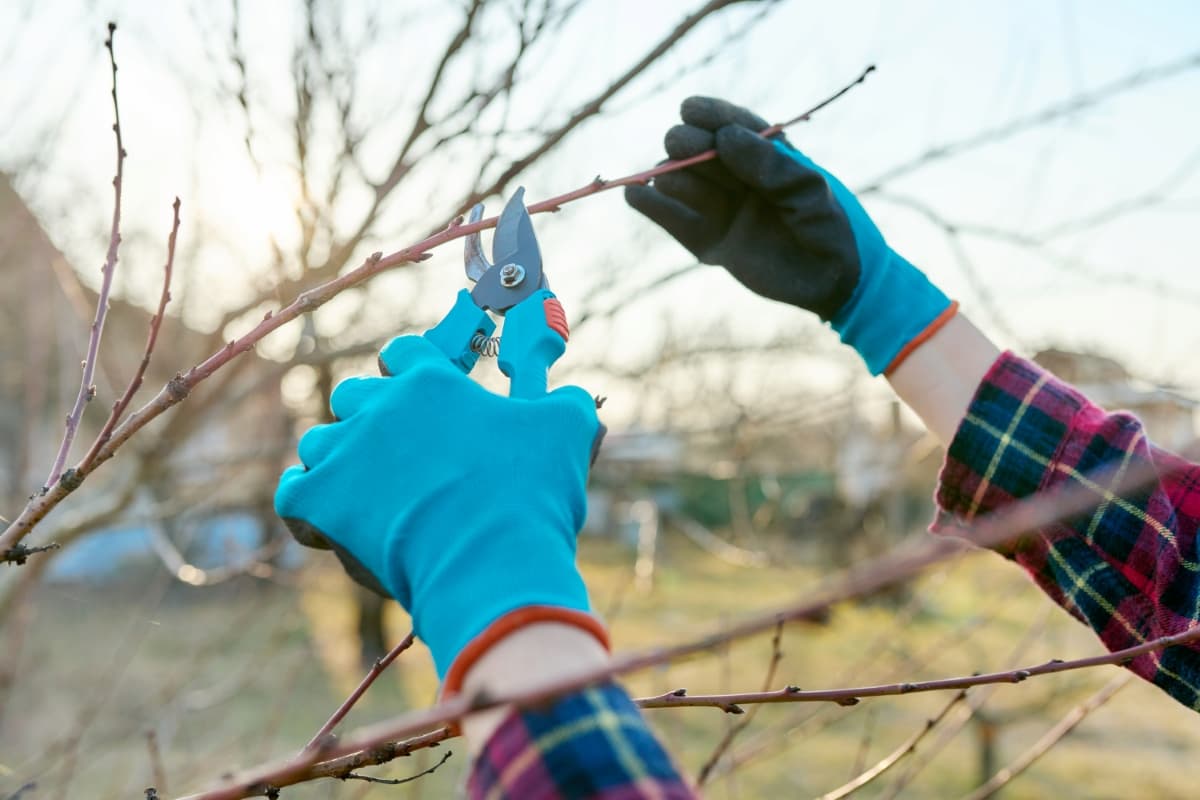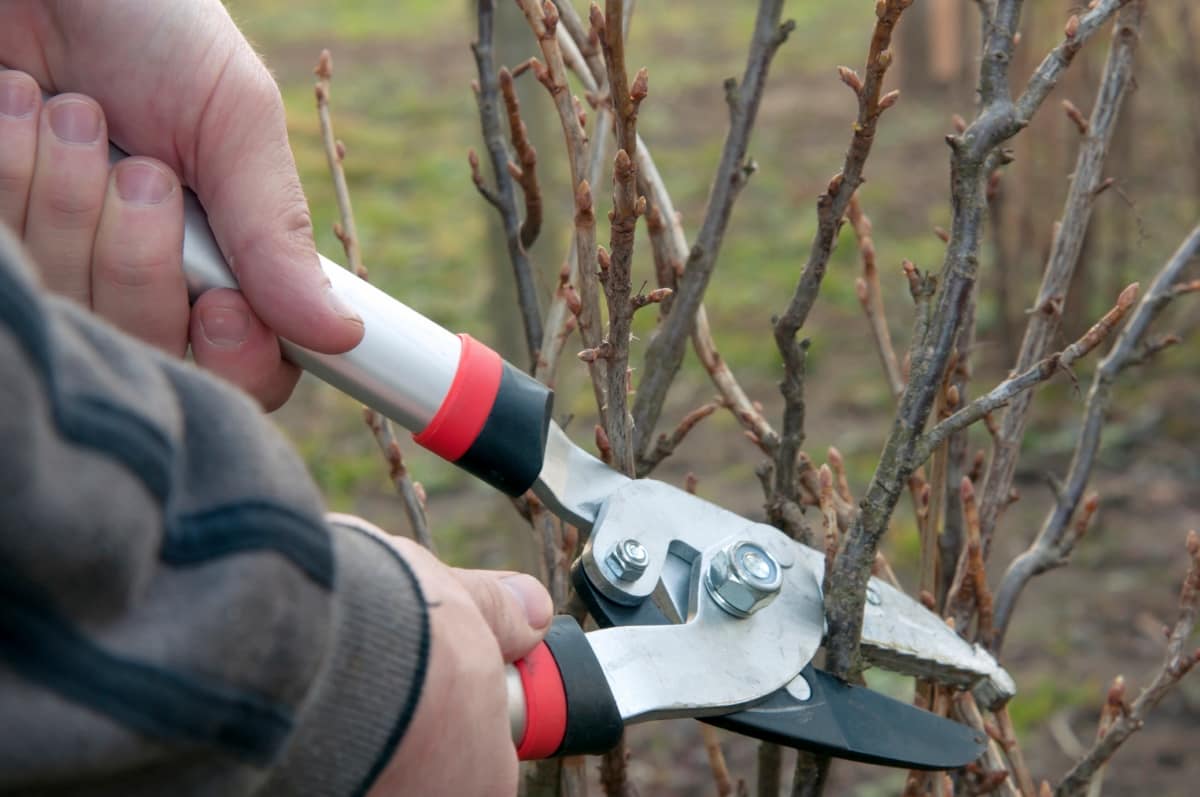The diverse climatic conditions and varied topography of California render it a prime destination for cultivating an extensive selection of fruit trees, encompassing everything from stone fruits to citrus varieties and more. Pruning is an essential practice that ensures these trees’ health, productivity, and aesthetics. When we discuss when to prune fruit trees in California, we’re considering optimal times to invigorate growth, combat diseases, or shape the tree’s structure.

When to Prune Fruit Trees in California
Understanding the Importance of Pruning Fruit Trees in California
Pruning fruit trees in winter in California can foster robust spring growth. Conversely, pruning fruit trees in summer in California can help more precisely manage the tree’s energy and growth patterns. And for some varieties, pruning fruit trees in fall in California can ensure they’re ready for the winter months ahead. But when not to prune fruit trees in California? Timing is pivotal, and there are moments when pruning can do more harm than good.
Factors to Consider Before Pruning Fruit Trees in California
Understanding certain factors will influence your approach before diving into the actual pruning methods. Soil quality, local pests, diseases, and regional weather patterns all play crucial roles. The best time to prune fruit trees in California largely depends on these dynamics.
For instance, coastal regions like San Francisco might have different pruning requirements than the drier regions like Riverside. Every tree type, be it plum, avocado, peach, pear, apple, apricot, cherry, or fig, requires unique care. Take the example of when to prune plum trees in California; it’s crucial to know that they’re sensitive to certain diseases that can be mitigated with timely pruning.
Pruning Deciduous Fruit Trees in California: Best Practices
Deciduous trees, which shed their leaves annually, have particular pruning requirements. For example, pruning apricot trees in California is best done in the late winter to early spring to promote healthy growth and fruit production. Late winter is also recommended when considering pruning plum trees in California or pruning peach trees in California. But always be cautious and informed about the specific needs of each tree species to ensure optimal health and yield.
In case you missed it: Training and Pruning of Avocado Tree: Techniques for Trimming and Staking

Pruning Citrus Trees in California: Timing and Techniques
Citrus trees are evergreens and significant in California’s agricultural landscape. The ideal period is usually spring when considering pruning fruit trees in Southern California, where citrus thrives due to the warmer climate. This season is after the danger of frost has passed but before the hottest months, ensuring the trees remain healthy and vibrant.
Pruning Stone Fruit Trees in California: Recommendations and Tips
Stone fruits include fruits with a large, hard pit inside, such as cherries, peaches, and plums. When to prune stone fruit trees in California generally hinges on the species. For instance, when to prune cherry trees in Northern California is best during their dormant winter phase to stimulate a bountiful harvest in the summertime. Similarly, when deciding when to prune peach trees in California, dormant season pruning can lead to stronger, more productive trees.
Pruning Apple and Pear Trees in California: Timing and Methods
Apple and pear trees are a staple in many Californian gardens. Pruning apple trees in California is usually best in the late winter when the trees are dormant. This helps invigorate spring growth. Similarly, when pondering when to prune pear trees in California, late winter to early spring timeline is often recommended to facilitate growth and ensure a generous harvest.
Pruning Plum and Peach Trees in California: Timing and Methods
Plums and peaches are both deciduous and thrive in California’s Mediterranean climate. As mentioned earlier, pruning plum trees in California during the dormant winter months can protect against disease and promote growth. The same timeframe applies when determining when to prune peach trees in California, as this timing prevents disease and boosts productivity.
Pruning Apricot and Cherry Trees in California: Timing and Methods
Both apricots and cherries enjoy the California sun. Pruning apricot trees in California is pivotal in late winter, ensuring they’re disease-free and ready to bear fruit. On the other hand, when to prune cherry trees in Northern California is during the winter dormancy, setting the stage for a hearty summer harvest.
Pruning Fig Trees in California: Guidelines for Optimal Growth
Figs are unique, and California offers an ideal climate for them. The late winter period stands out when determining when to prune fig trees in California. This timing helps the tree produce higher-quality fruits and ensures longevity.
Pruning Avocado Trees in California: Timing and Strategies
Avocado has become synonymous with California. When it comes to when to prune avocado trees in California, the post-harvest period, usually late winter to early spring, is optimal. This period allows the tree to focus its energy on growth rather than fruit production.
In case you missed it: How to Train and Prune Apricot Trees: A Comprehensive Guide

Prune Fruit Trees in Northern California: Timing and Strategies
Northern California, with its distinct climate, dictates specific pruning times. As mentioned, when to prune cherry trees in Northern California is during their winter dormancy. Such timing and strategies ensure that trees in this region thrive and produce bountifully.
Prune Fruit Trees in Southern California: Timing and Methods
Pruning times might differ slightly in Southern California with its warmer climate and extended growing seasons. As highlighted previously, when considering pruning fruit trees in Southern California, particularly citrus, spring is often the prime period after the threat of frost but before the scorching heat.
Pruning Trees in California’s Coastal Regions: Best Approaches
The coastal regions of California, encompassing areas like San Diego, Los Angeles, and San Francisco, present unique climatic challenges due to their proximity to the ocean. The mild temperatures and increased humidity might necessitate pruning at different times than the state’s interior regions. For instance, when deciding when to prune fruit trees in these areas, it’s essential to consider the increased risk of fungal diseases due to the moist environment.
Late winter to early spring remains ideal, as it’s usually before the onset of the dense fog season, minimizing the prolonged wetness that can favor fungal growth. Furthermore, pruning fruit trees in fall in these regions can also be beneficial, ensuring trees are prepared for the mild winters without carrying any unnecessary growth that might harbor pests or diseases.
Pruning Trees in California’s Mountainous Regions: Key Considerations
California’s mountainous regions, such as the Sierra Nevada, offer a colder and sometimes snowier environment than the rest of the state. This climate has implications for when to prune fruit trees. In these elevated regions, it’s often best to wait until late spring for pruning, ensuring the threat of hard frost or snow has passed. Pruning fruit trees in winter in California’s mountains can be risky, as open cuts might be exposed to extreme cold, potentially damaging the tree.
In case you missed it: How to Grow and Care for Pachira Bonsai: Planting, Repotting, and Pruning

On the other hand, summer pruning can be beneficial in moderating the tree’s growth and ensuring they’re not overly vigorous, which could make them more susceptible to winter damage. Always be vigilant about the specific needs of each tree species and the challenges presented by the colder, mountainous environment.
Conclusion
This guide provides a foundational understanding of pruning practices across California. Each region and fruit tree species requires particular attention to ensure health, productivity, and resilience. Following these guidelines and recommendations, fruit tree enthusiasts and farmers alike can enjoy bountiful harvests and vibrant landscapes.
- Feed Your Flock for Less: Top 10 Tips to Save on Chicken Feed
- Ultimate Guide to Ossabaw Island Hog: Breeding, Raising, Diet, and Care
- Hatching Answers: The Top 10 Reasons Your Chickens Aren’t Laying Eggs
- Eggs and Economics: Breaking Down the Cost of Raising Backyard Chickens
- Defend Your Greens: Proven Methods to Keep Iguanas Out of Your Garden
- Ultimate Guide to Cinnamon Queen Chicken: A Comprehensive Guide for Beginners
- Ultimate Guide to California Tan Chicken: Breeding, Raising, Diet, Egg-Production and Care
- Ultimate Guide to Marsh Daisy Chicken: Breeding, Raising, Diet, and Care
- 10 Types of Chicken Farming Businesses You Can Start for Profits